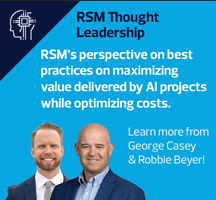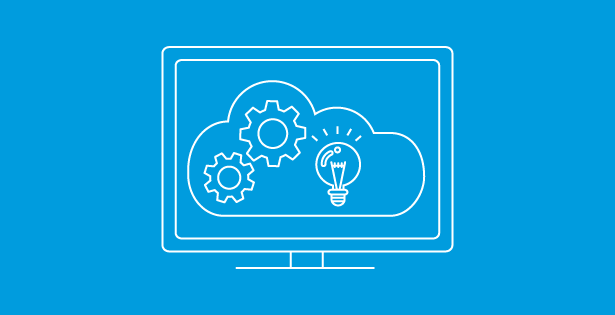In the late 1990s and early 2000s, nonprofits faced a digital crossroads. Some embraced online donations early and reaped the rewards. Others hesitated – and paid the price in lost revenue, donor engagement, and relevance. Today, we find ourselves at a similar inflection point with artificial intelligence. The question is: will history repeat itself?
Personal Perspective: Why This Moment Feels Different
Throughout my career, I’ve had the opportunity to be part of nearly every major wave of technological change. I’ve seen organizations move to client-server systems, websites, e-commerce and social tools. I’ve worked through the mobile revolution and the shift to app-based engagement. I’ve helped teams adopt SaaS platforms and evolve from basic email to full-scale marketing automation.
Each of these shifts brought new capabilities and new ways of working, but nothing compares to what I’m seeing now with AI. The speed, scale, and potential of this moment are unlike anything I’ve experienced. This isn’t just another wave of innovation, it’s a fundamental rethinking of how we work, connect, and create impact. This wave is faster, more disruptive, and full of potential. It’s exciting, a little daunting, and impossible to ignore.
A Look Back – The Cost of Being Late to Online Giving
Nonprofits that delayed adopting online donations experienced:
- Lost Revenue Potential: As digital giving surged, late adopters missed out on millions in potential contributions. In fact, by 2023, 64% of donors preferred to give online using credit or debit cards (1)
- Donor Disconnect: Without digital tools, they struggled to engage younger, tech-savvy donors who increasingly expect seamless, digital-first experiences (1)
- Visibility Gaps: A weak online presence meant fewer opportunities to tell their story and attract support.
- Data Deficiency: No digital tools meant no donor insights—crippling personalization and campaign optimization.
- Emergency Inertia: During crises like 9/11 or natural disasters, nonprofits without online giving tools couldn’t mobilize fast enough.
Just as the internet redefined how nonprofits connect with supporters, AI is redefining how we understand, serve, and scale impact. The stakes are just as high—if not higher.
The AI Parallel – What’s at Stake Now
AI is not just a trend; it’s a transformation. Much like the rise of online giving, it’s poised to reshape how nonprofits operate, engage, and grow. Those slow to adopt AI may face:
- Operational Inefficiency: AI can automate donor segmentation, grant writing, and impact reporting. Without it, teams may fall behind.
- Missed Personalization: AI enables hyper-personalized donor journeys. Without it, engagement may feel generic and outdated.
- Data Overload: AI helps make sense of complex data. Without it, insights remain buried.
- Competitive Disadvantage: Funders and donors are increasingly drawn to data-driven, tech-forward organizations.
- Innovation Gap: AI is fueling new models of service delivery, from chatbots for client support to predictive analytics for program planning.
The Current Reality – A Sector Under Strain
Recent data from the 2024 NFF State of the Nonprofit Sector Survey reveals a sector already under pressure:
- Declining Donor Participation: The number of donors dropped by 5.3% year-over-year, with the steepest declines among small-dollar donors (under $100), who fell by 12.4% (1)
- Retention Crisis: Only 13.8% of new donors were retained year-to-date, marking the fourth consecutive year of declining retention (1)
- Revenue Plateau: While the total dollars raised increased slightly (+0.9%), this growth came from fewer donors—signaling a growing reliance on major gifts and a shrinking base (1)
These trends underscore a critical point: traditional fundraising models are under stress. Nonprofits need smarter, faster, and more personalized ways to engage supporters—and AI offers exactly that.
The Share of Wallet Challenge: Even Early Adopters Missed the Bigger Opportunity
Even nonprofits that embraced online giving early often stopped short of realizing its full potential. They celebrated the first digital gift but neglected to build the systems and strategies needed to deepen donor relationships. As a result, many organizations failed to deepen donor relationships and missed the chance to increase the portion of a donor’s total charitable giving that consistently supports their mission.
We are seeing the same risk with artificial intelligence. The first AI pilot or chatbot is not the finish line. It is the beginning of a much larger shift toward personalized, data-informed fundraising. Without a strategy to move beyond the first interaction, nonprofits may once again fall short of what is possible.
Retention data from 2024 reveals just how fragile first-time donor relationships can be. The majority of new supporters never return to give again, representing a massive loss in potential lifetime value.
That’s where AI comes in. Here are five ways it can nurture first-time donors into lifelong supporters
- Personalized Stewardship Journeys – AI can analyze donor behavior and preferences to tailor follow-up messages, impact stories, and engagement opportunities that feel personal and relevant, building trust and emotional connection over time.
- Predictive Engagement – By identifying patterns in giving history and interaction data, AI can help predict when a donor is most likely to give again and what type of outreach will be most effective, enabling timely, meaningful touchpoints.
- Mission-Aligned Content Recommendations – AI can curate and deliver content that aligns with a donor’s interests, such as specific programs, causes, or impact areas, keeping them informed and inspired between giving moments.
- Conversational AI for Real-Time Support – Chatbots and virtual assistants can answer donor questions, share updates, and guide them through giving options 24/7, making the experience seamless and responsive.
- Smart Segmentation for Deeper Engagement – AI can segment donors not just by demographics or gift size, but by values, motivations, and engagement style, allowing nonprofits to craft campaigns that resonate on a deeper level.
Salesforce emphasizes that personalized engagement is key to donor retention and long-term value. (2) Their guidance encourages nonprofits to move beyond transactional giving by using data to understand donor motivations, tailor outreach, and build lasting relationships.
AI is not just a tool for efficiency. It is a lever for a deeper, more intimate connection to an organization’s donors and constituents. To avoid repeating the missed opportunities of the online giving era, nonprofits must use AI to shift from one-time transactions to long-term stewardship. That is how organizations can grow not just donor counts but donor commitment.
Lessons from the Past, Urgency for the Future
The lesson is clear: early adopters of online giving gained a decade-long advantage. The same will be true for AI. The cost of waiting isn’t just missed opportunity; it means falling behind in a sector where trust, relevance, and agility are everything.
What Nonprofits Can Do Now
You don’t need a data science team to get started with AI. Here’s how to take the first step:
- Audit Your Data: AI is only as good as the data it learns from. Start by understanding what data you have and what you’re missing.
- Start Small: Pilot AI tools for donor segmentation, email personalization, or volunteer scheduling.
- Invest in Learning: Train your team on AI basics. Understanding the landscape is the first step to navigating it.
- Partner Strategically: Collaborate with tech-forward vendors or consultants who understand the nonprofit space.
- Build Ethically: Ensure your AI use aligns with your mission and values; especially around transparency, bias, and privacy.
More than ever, in these early days for sure, AI projects are going to be about collaboration. It is going to be working with your solution providers and partners on how your organization can best leverage AI in your environment.
Closing Thought
Nonprofits don’t need to become tech companies. But they do need to become tech aware.
Major platforms like Microsoft and Salesforce are already embedding AI (CoPilot and Agentforce respectively) into the tools nonprofits use every day. These technologies are helping organizations personalize donor engagement, streamline operations, and unlock insights from complex data. The tools are no longer emerging, they are available now. The real question is whether nonprofits will take full advantage of them or repeat the hesitation that once held them back from embracing online giving.
The AI moment is here. Will your organization lead or lag?
Call to Action: Just Getting Started? RSM Can Help
If your organization is just beginning its AI journey, RSM is here to help you take the first step with confidence. Our nonprofit-focused AI services are designed to meet you where you are and scale with your mission. We offer:
- AI Readiness Assessments – Evaluate your current systems, data, and workflows to identify where AI can deliver the most value.
- Use Case Workshops – Collaborate with your team to define practical, mission-aligned AI applications across fundraising, finance, programs, and operations.
- Implementation Support – From selecting the right tools to integrating them into your existing platforms, we help you move from idea to impact.
- Training & Change Management – Equip your staff with the knowledge and confidence to work alongside AI tools, like Agentforce from Salesforce or CoPilot from Microsoft, effectively and ethically.
Let’s explore how AI can become a trusted teammate in your mission. Reach out to me, Ron Wille (ron.wille@rsmus.com) or visit rsmus.com to learn more.
Citations
- Fundraising Effectiveness Project. “Second Quarter Fundraising Report.” Association of Fundraising Professionals. https://afpglobal.org/FundraisingEffectivenessProject
- Salesforce.org. “The Future of Fundraising is Here: How Salesforce Powers Personalized Giving.” Association of Fundraising Professionals. https://afpglobal.org/future-fundraising-here-how-salesforce-powers-personalized-giving

 RSMUS.com
RSMUS.com


